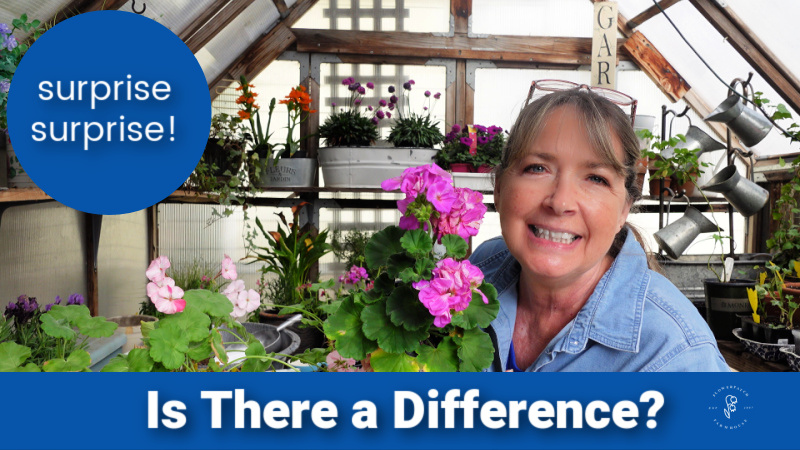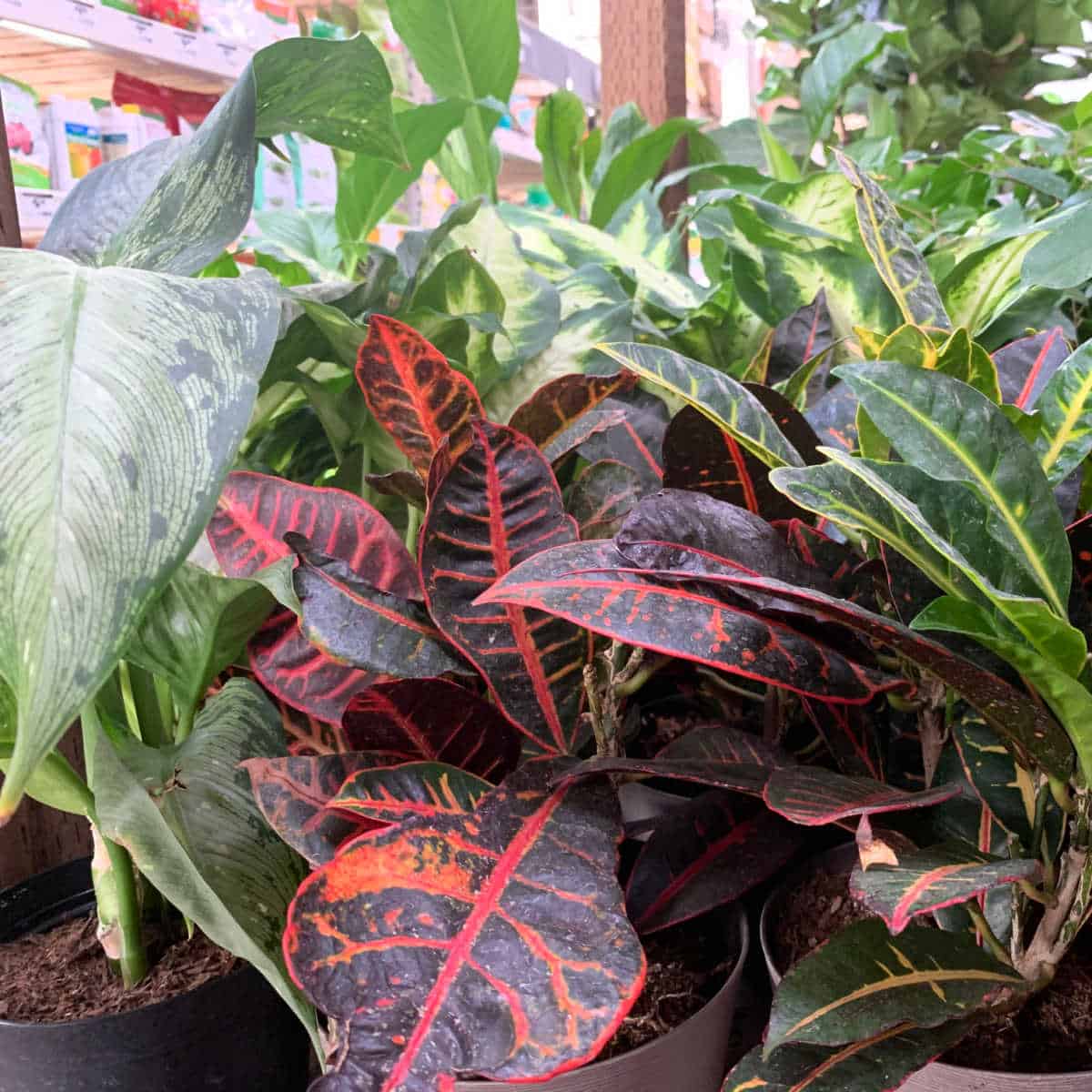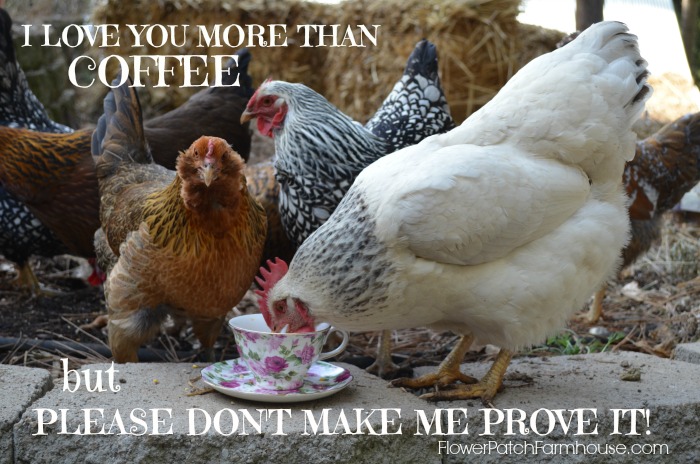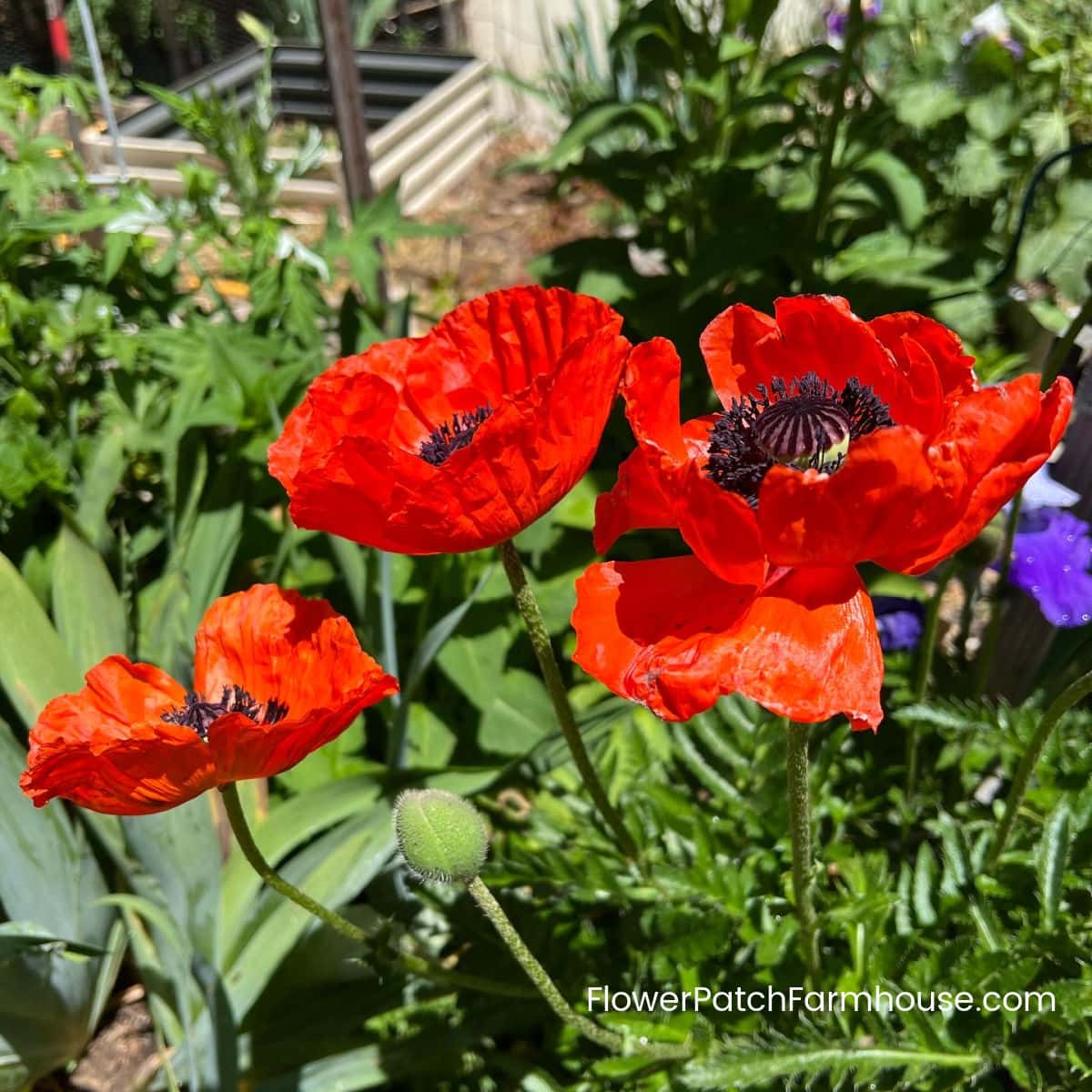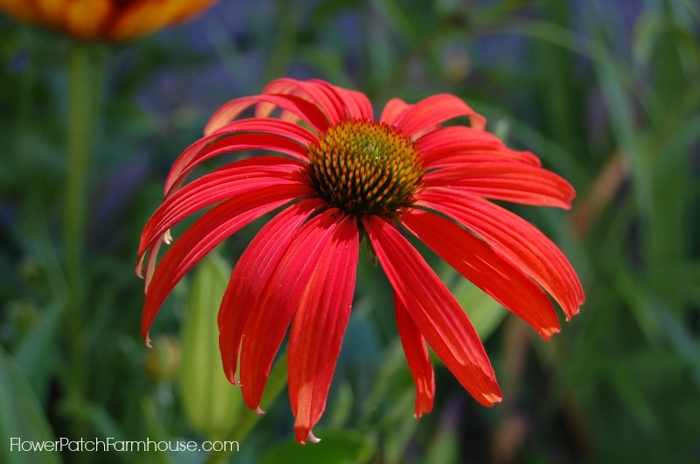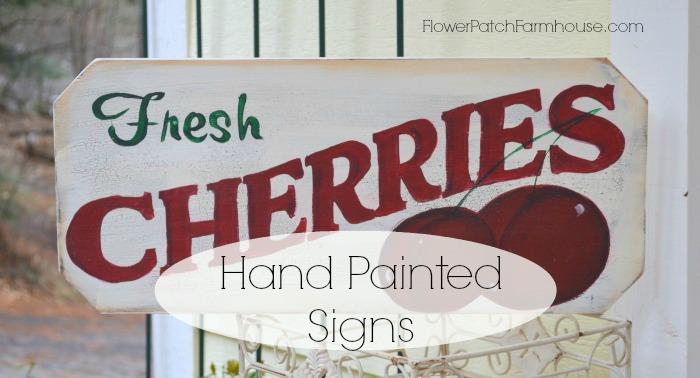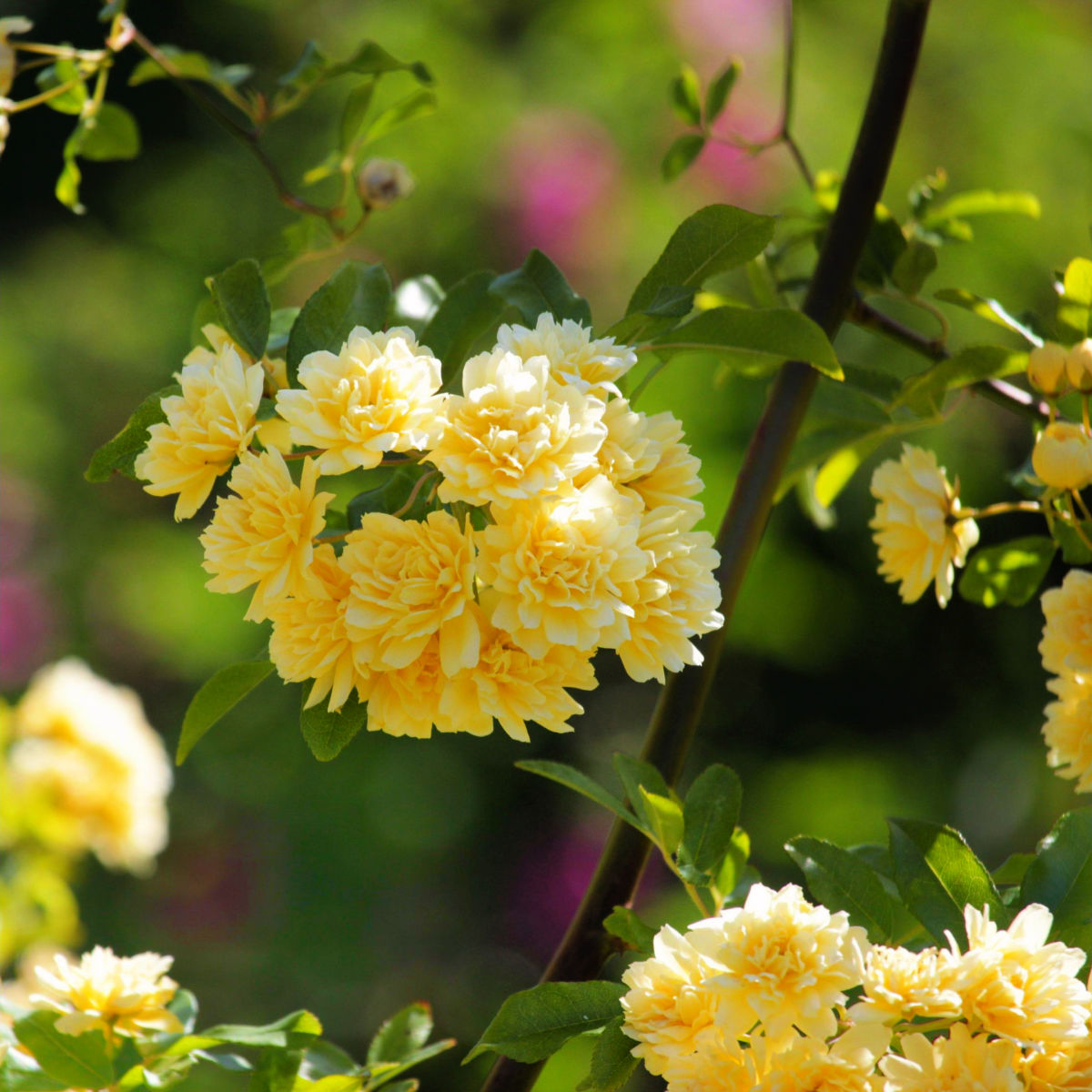Zonal Geraniums vs. Seed Grown
The Friendly Guide to Understanding Seed Grown vs. Zonal Geraniums
Hello Garden Friends! Today, we’re diving into the world of zonal geraniums vs seed grown! Both are vibrant and cheerful plants that brighten up gardens, balconies, and windowsills around the globe.
But they are not created equal! Don’t worry, I’ll keep it simple and fun, just like chatting with a friend over a cup of coffee.
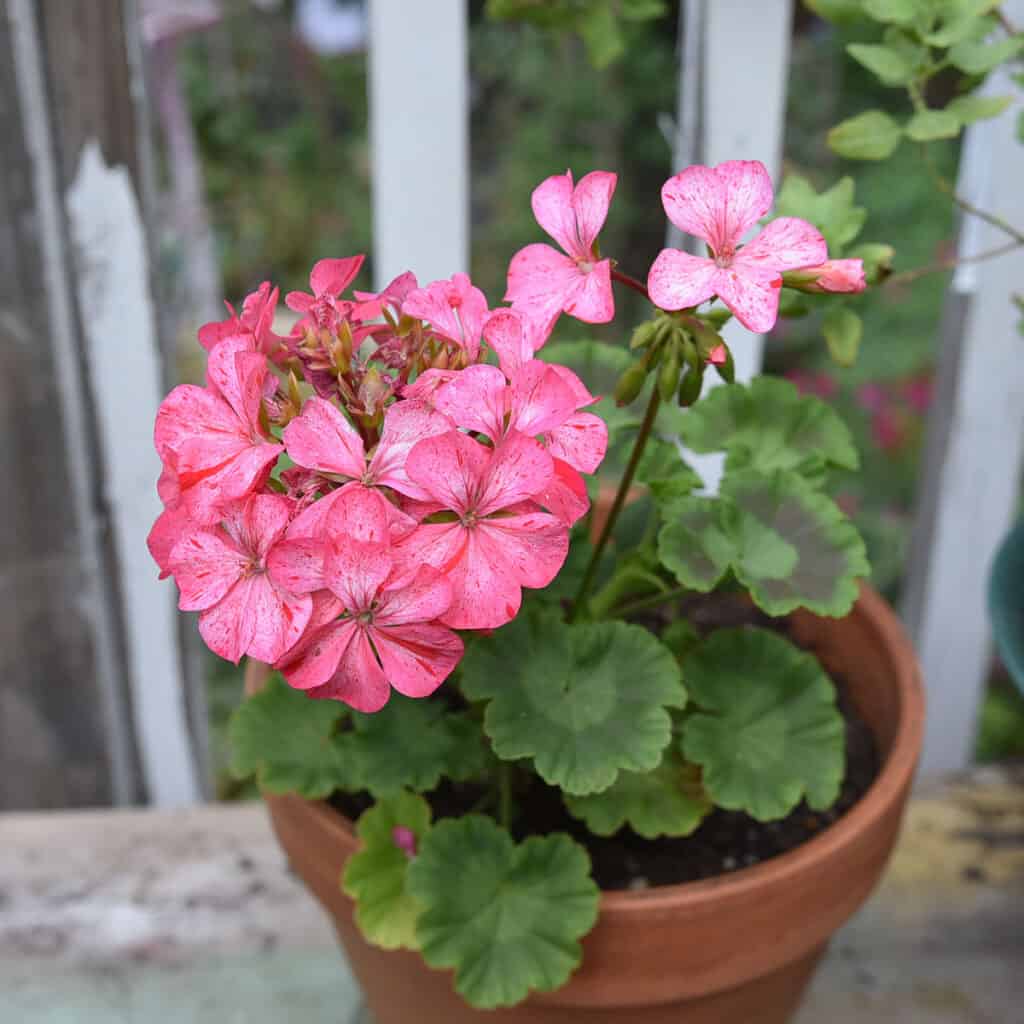
This post contains affiliate links. If you make a purchase after clicking a link I may make a small commission at no cost to you.
What’s in a Name: Geranium Basics
First things first, let’s clarify that when most people talk about “geraniums,” they’re usually referring to plants from the genus Pelargonium. True geraniums, or cranesbills, belong to a different family altogether and are more commonly used in perennial borders.
But for today, we’re sticking with the Pelargonium clan, focusing on the colorful, potted beauties we use on our patios, decks, and other outdoor spaces.
How to Grow Hardy Geraniums!
Hardy geraniums are underappreciated yet stalwarts of the garden. Find out why you should add them to your garden today!
But even in this genus, there are many others like Ivy Geraniums, Regal Geraniums, and Scented but we will leave those for another day. (Regal Geraniums are also known as Martha Washington Geraniums)
Let’s talk about seed-grown (also called garden geraniums) pelargoniums and zonal geraniums.
Many grow these as an annual flower but in zones 10 – 11 they are tender perennials. Some keep them overwinter in sunny windows.
Seed Grown Geraniums: The Jack-of-All-Trades
Seed-grown geraniums are, quite literally, grown from seeds. This might seem obvious, but it’s an important distinction because it affects everything from the price to the variety and how they can look in the garden.
They are a type of Zonal geranium but ones labeled in garden centers as Zonal are the ones we speak about later.
Pros:
- Variety: Seed-grown geraniums offer a wide range of colors and patterns. From dazzling reds to soft pinks and pure whites, you’re spoilt for choice.
- Cost-Effectiveness: Generally, they’re more wallet-friendly than their zonal counterparts, mainly because seeds are cheaper to produce and transport.
- Ease of Growing: These are considered beginner-friendly. With proper care, you can start these little beauties from seed yourself, enjoying the journey from sprout to bloom.
Cons:
- Uniformity: If you’re aiming for a very uniform look in your garden, seed-grown geraniums can be a bit unpredictable. They might vary slightly in size, flower shape, or color intensity. But to me, they are still beautiful!
- Growth Speed: They might take a bit longer to reach maturity compared to zonal geraniums, meaning patience is key.
Grow Geraniums from Seed!
Zonal Geraniums: The Showstoppers
Zonal geraniums are named for the distinct bands or “zones” of color on their leaves. These are the heavyweights in the world of geraniums, known for their lush foliage and impressive, long-lasting blooms.
Zonal geraniums are genetically enhanced plants, propagated to produce sturdy stems, stronger leaves, and shatter-resistant flowers so they stay longer on the plant.
Pros:
- Vibrancy and Size: Zonal geraniums usually have larger, more vivid blooms and thicker foliage, making them the centerpieces of many gardens.
- Durability: They’re robust! Zonal geraniums can withstand more varied conditions and are often more resistant to pests and diseases.
- Consistency: If you’re looking for uniformity in your floral displays, zonal geraniums are your go-to. They maintain a consistent size, shape, and color, perfect for those Instagram-worthy garden shots.
Cons:
- Price: All these benefits come with a higher price tag. Zonal geraniums are typically more expensive than seed-grown varieties.
- Maintenance: They might require a bit more TLC to keep them looking their best, including regular deadheading and pruning.
They are only propagated by cuttings and not by seed.
easy way to get more bang for the buck!
Propagate Your Geraniums from Cuttings!
When buying geraniums or pelargoniums, inspect the root base to determine if they were propagated with a foam “plug.” This plug helps growers speed up the time to market, but it can be fatal to the plant if not removed.
Gently eliminate as much of the plug as possible without harming the existing roots. After this, the plants are ready to be transferred to a larger pot. For an extra precaution, take a few cuttings and root the in case you lose the parent plant.
Note: many varieties of zonal geraniums now do not have the distinctive leaf colors so you will have to look at labeling when buying a plant at garden centers or nurseries.
Which Should You Choose?
The choice between seed-grown and zonal geraniums boils down to your gardening goals, budget, and patience level. If you love experimenting and are on a budget, seed-grown geraniums offer a world of variety and the satisfaction of growing something from scratch.
On the other hand, if you’re looking for instant gratification and show-stopping beauty with a bit more durability, zonal geraniums are worth the investment.
Again, it should be noted that zonal pelargoniums are typically stockier and more mounded than the seed-grown varieties and the flowers will not shatter, making them last longer on the plant.
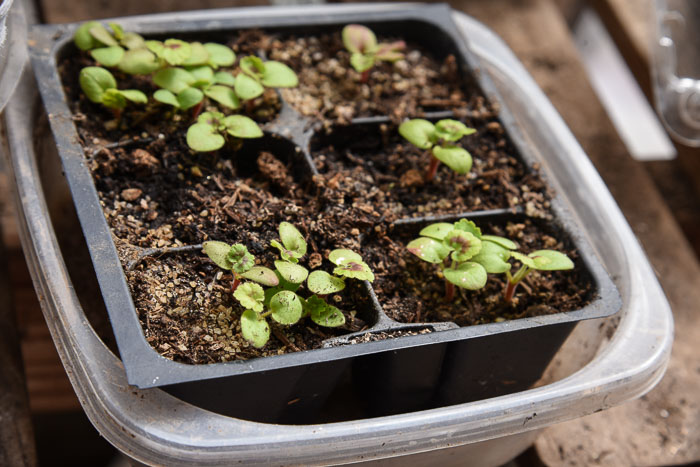
Tips for Thriving Geraniums
Regardless of the type you choose, here are a few growing tips to keep your geraniums happy:
Sunshine:
Geraniums love the sun, so make sure they get at least 6 hours of direct sunlight a day. Though in most climates they enjoy full sun if you live in a very hot climate they tend to stay looking better with some afternoon shade.
Hot summer weather can be tough on these plants. A lot of common geraniums won’t bloom when it’s very hot, which is called “heat check.” (They’ll bloom again when it gets cooler.) To keep this from happening, you can plant types that handle the heat better, like Americana, Eclipse, Fidelity, Maverick, and Orbit Series.
I have also had success moving them into afternoon shade and kept them blooming.
Watering:
Keep the soil moist but not waterlogged. Allow the topsoil to dry out slightly before watering again.
Feeding:
Use a liquid organic fertilizer every 4-6 weeks during the growing season. My favorite one as it is sustainable and organic is this EcoOrganic, made from grocery store food waste.
My favorite way to use the fertilizer is weakly, weekly. I dilute to 1/4 strength and water with it weekly.
So, whether you decide on the diverse and economical seed-grown geraniums or the lush and vibrant zonal geraniums, you’re sure to add a splash of color and joy to your garden.
Happy gardening!

